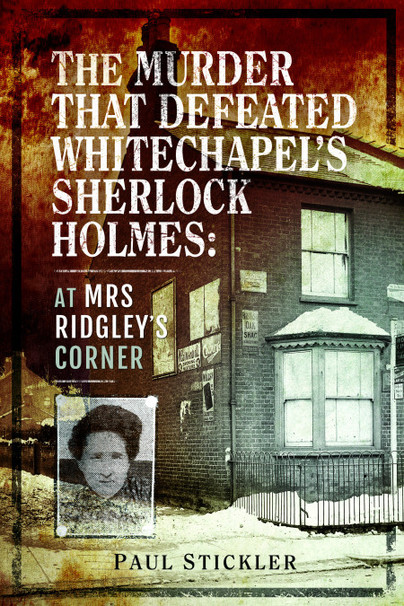 Published By: Pend and Sword
Published By: Pend and Sword
Publication Date: 16th April 2018
ISBN: 9781526733856
Format: Paperback
Price: £14.99
Blurb
In 1919, when a shopkeeper and her dog were found dead in Hitchin, Hertfordshire with brutal head injuries, there followed an extraordinary catalogue of events and a local police investigation which concluded that both had died as a result of a tragic accident. A second investigation by Scotland Yard led to the arrest of an Irish war veteran, but the outcome was far from conclusive.
Written from the perspective of the main characters involved and drawing on original and newly-discovered material, this book exposes the frailties of county policing just after the First World War and how it led to fundamental changes in methods of murder investigations.
Offering a unique balance of story-telling and analysis, the book raises a number of unanswered questions. These are dealt with in the final chapter by the author’s commentary drawing upon his expertise.
My Review
Thanks to Rosie at Pen and Sword for sending me this book. It arrived yesterday and I have read it all in a couple of afternoons.
On 25th February 1919, between 8.30 p.m. and 9.00 p.m. Mrs Elizabeth Ridgley and her dog were bludgeoned to death and the days takings stolen from the till. She was found by P.C. Rigby two days later, after a freezing weekend of heavy snow.
Mrs Ridgley ran a shop from her converted ground floor, accompanied only by her Irish Terrier, Prince. She didn’t trust banks, but kept her money at home and invested in stock for the shop, taking an average of £23 a week. A widow, she had a step-son from whom she was estranged. She was well-known, severe, and had regular hours of work, 8 am to 9pm Monday to Saturday. Like many shopkeepers she may have been resented during the rationing for her control of food costs.
Compared to John Healy, an Irish labourer, and former soldier who served in Gibralter from 1903 – 1906, and then as a reservist until he was called up in 1914 to serve as a stretcher bearer until 1916, when his 13 years were up, Ridgley was wealthy. Returning to Ireland he tried to settle back into life as a farm labourer, moved about, trying to settle in Lincolnshire before being sacked and returning to his home town of Listowel, where he married his wife Annie and then decided to move back to England for work. They had only been in Hitchin for a few months, living in a series of rooms in lodging houses. He earned about £3 4s a week as a labourer in a factory, and occasionally received gratuities from the army. He was known to be violent and a drunk after his return from France, had a brother considered ‘silly’ and his mother had died in an asylum. Healy was in debt to Mrs Ridgley and was seen outside her shop on the night of her death.
The first investigation was a mess, with the crime scene walked over by all and sundry, the evidence touched and moved about and the body taken away too soon; it resulted in a conclusion of accidental death. Enough concern about the reliability of the local Chief Superintendent’s conclusion was raised that the Chief Constable of Hertfordshire felt the need to call in Scotland Yard. The second was well done, by Chief Inspector Wensley, but hampered by the mess that was the first. Wensley had joined the police force in 1888, and his first year was spent on the Ripper case. He spent years in the East End until his rise in rank forced is move to Scotland Yard. After 41 years he retired as one of the most successful detective the Metropolitan Police had ever had. His work improved local and county policing. In 1919 the police has been on strike for improved pay and conditions twice, were short-handed after the war, and county constabularies were not trained in proper detective work.
The social context is as important as the criminal investigation. In 1919 people were still struggling under rationing, wages were depressed, housing was short, severely traumatised men were returning from the war with no mental health support. Irish labourers were common in England, having taken on work after conscription was implemented in 1916, and were resented by returning soldiers, employers and held in suspicion by many people due to the demand for Irish Independence, especially as there were attacks by the IRA. There was a lot of support for returning servicemen and former soldiers in criminal cases, as people understood that they had seen some horrible things and been irrevocably changed by the war. It is important to understand the context in which Mrs Risgley was murdered and John Healy was accused and acquitted, however from this distance it is impossible to say who did it or why.
Paul Stickler describes the events of February to July 1919 from the point of view of the participants and then provides a chapter of commentary on the investigation, the trial and questions that weren’t answered. The storytelling is very effective and the commentary thoughtful, bringing up important questions and setting the crime in the context of Britain in 1919. A useful insight into the time and place, as well as policing in the counties in the early twentieth century.

1 Comment